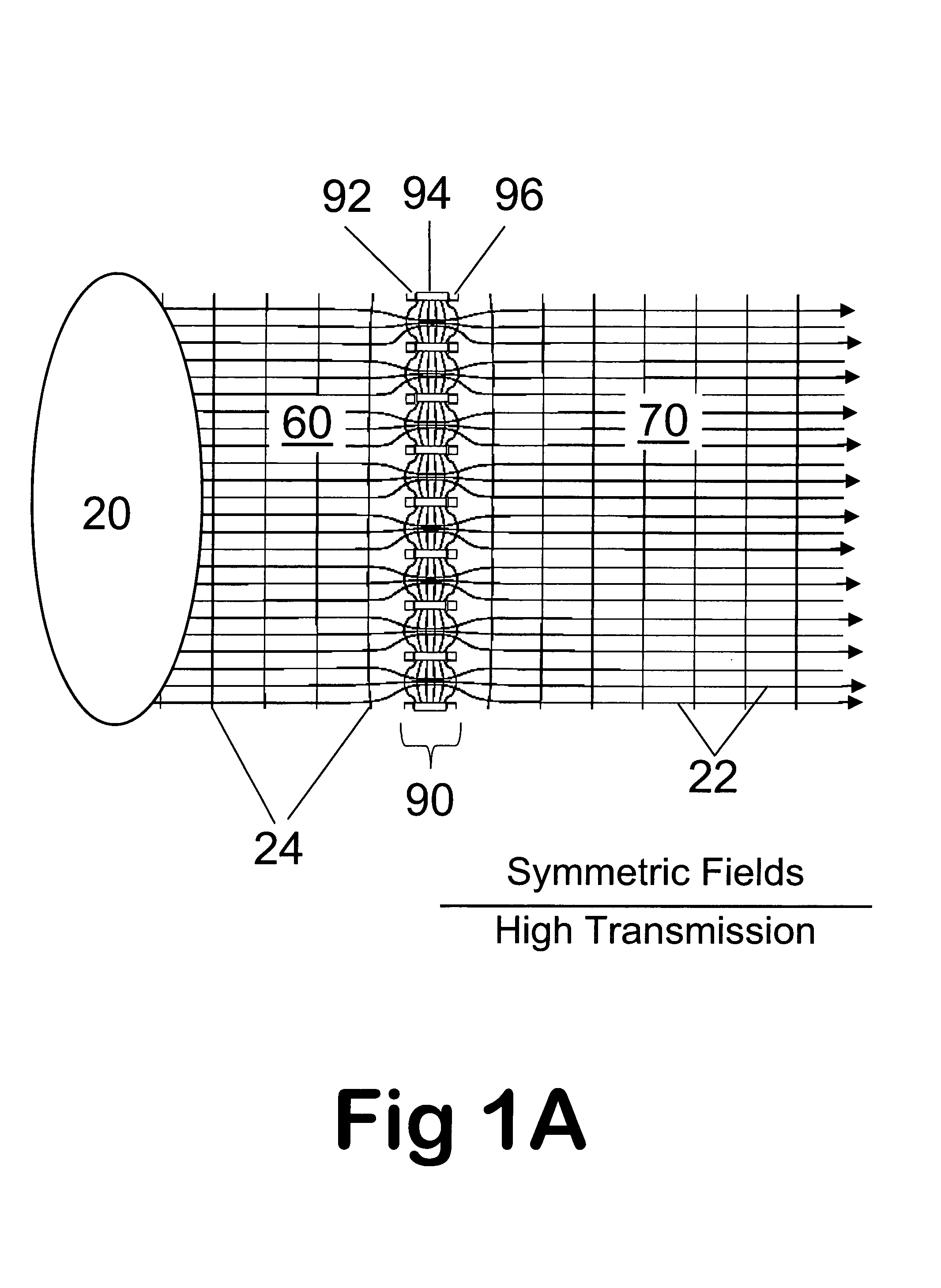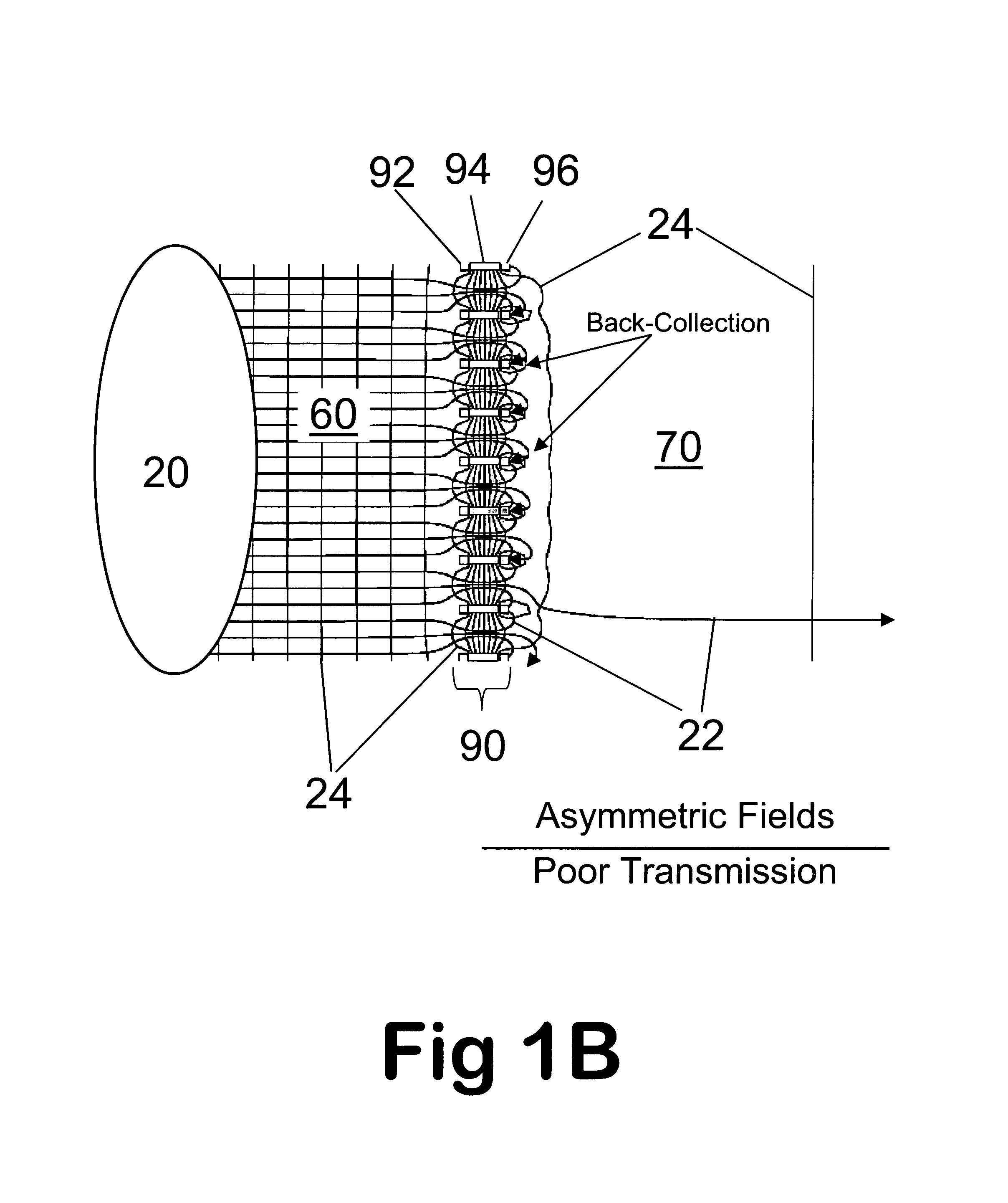Laminated lens for focusing ions from atmospheric pressure
a technology of atmospheric pressure and laser lens, which is applied in the direction of instruments, particle separator tube details, separation processes, etc., can solve the problems of poor sampling efficiency, general approach severely restricted, and difficult to sample atmospheric pressure ions efficiently, etc., to achieve independent collection efficiency
- Summary
- Abstract
- Description
- Claims
- Application Information
AI Technical Summary
Benefits of technology
Problems solved by technology
Method used
Image
Examples
Embodiment Construction
—FIGS. 8A THRU 8C, 9A, 9B, 10, 11, 14B, AND 14C—PREFERRED EMBODIMENT
[Laminated Focusing Device with Seven Metal Laminates and Annular Openings]
[0126]A preferred embodiment of the present invention is an ion or particle transmission and focusing device utilizing a laminated high transmission element, atmospheric lens or just abbreviated as L-HTE 90 as illustrated in 8A thru 8C. Sample from a source 10 is delivered to an ion source 20 by a delivery means 12 through an ion source entrance wall 62. Wall 62 is electrically isolated from an ion source cylindrical wall 64 by a ring insulator 66. Wall 64 is isolated from the L-HTE 90 by a ring insulator 68. The device includes an atmospheric pressure or near atmospheric pressure ion source region 60 from which ions originating from the source 10 are delivered or, alternatively, neutral species are ionized in the ion source 20. This device is intended for use in collection and focusing of ions from a wide variety of ion sources; including, b...
PUM
 Login to View More
Login to View More Abstract
Description
Claims
Application Information
 Login to View More
Login to View More - R&D
- Intellectual Property
- Life Sciences
- Materials
- Tech Scout
- Unparalleled Data Quality
- Higher Quality Content
- 60% Fewer Hallucinations
Browse by: Latest US Patents, China's latest patents, Technical Efficacy Thesaurus, Application Domain, Technology Topic, Popular Technical Reports.
© 2025 PatSnap. All rights reserved.Legal|Privacy policy|Modern Slavery Act Transparency Statement|Sitemap|About US| Contact US: help@patsnap.com



